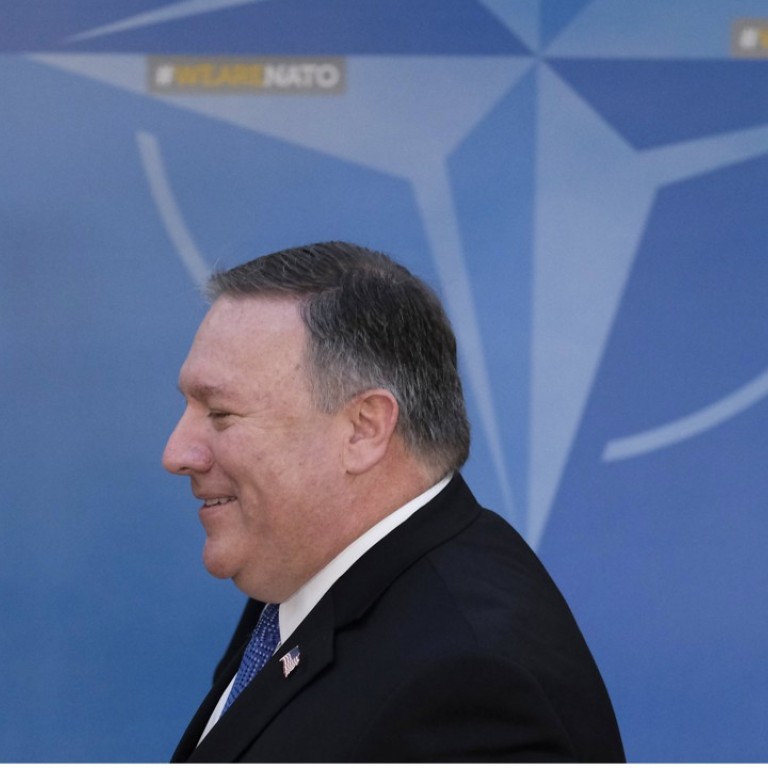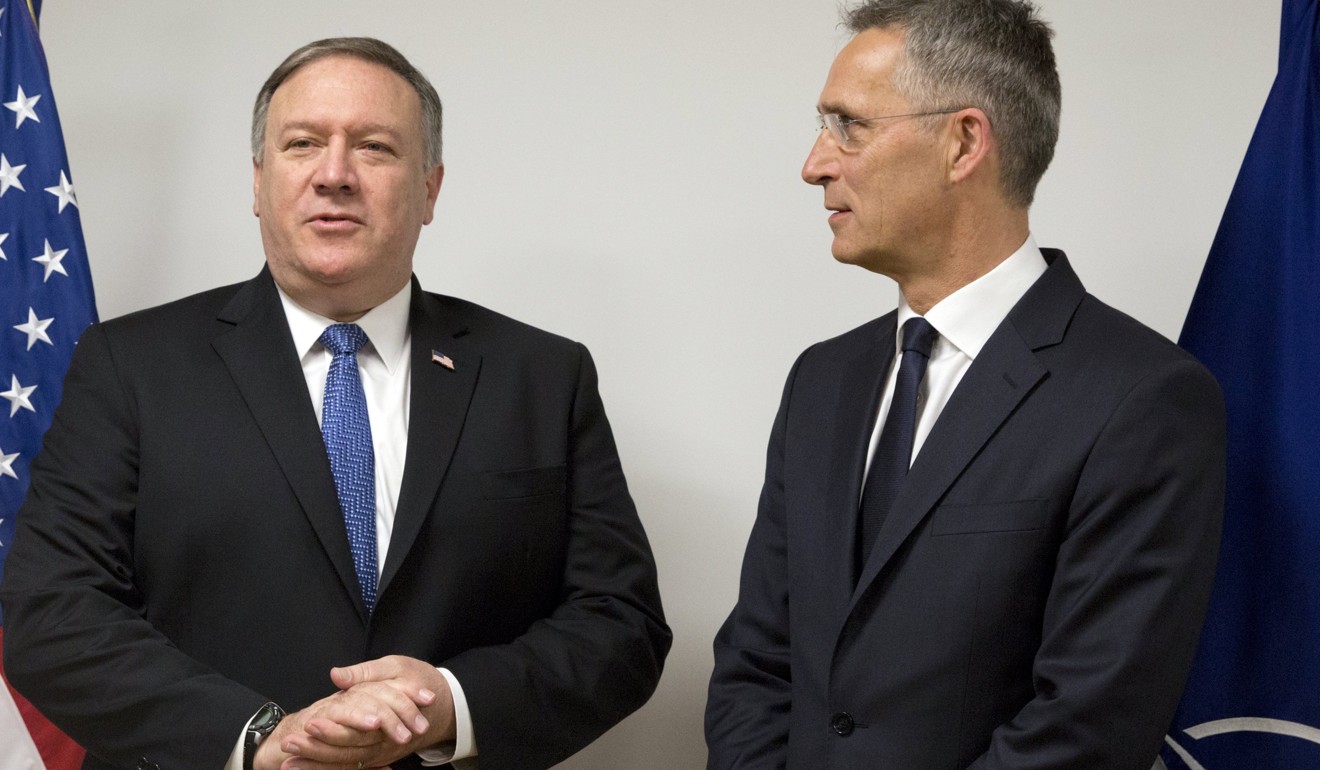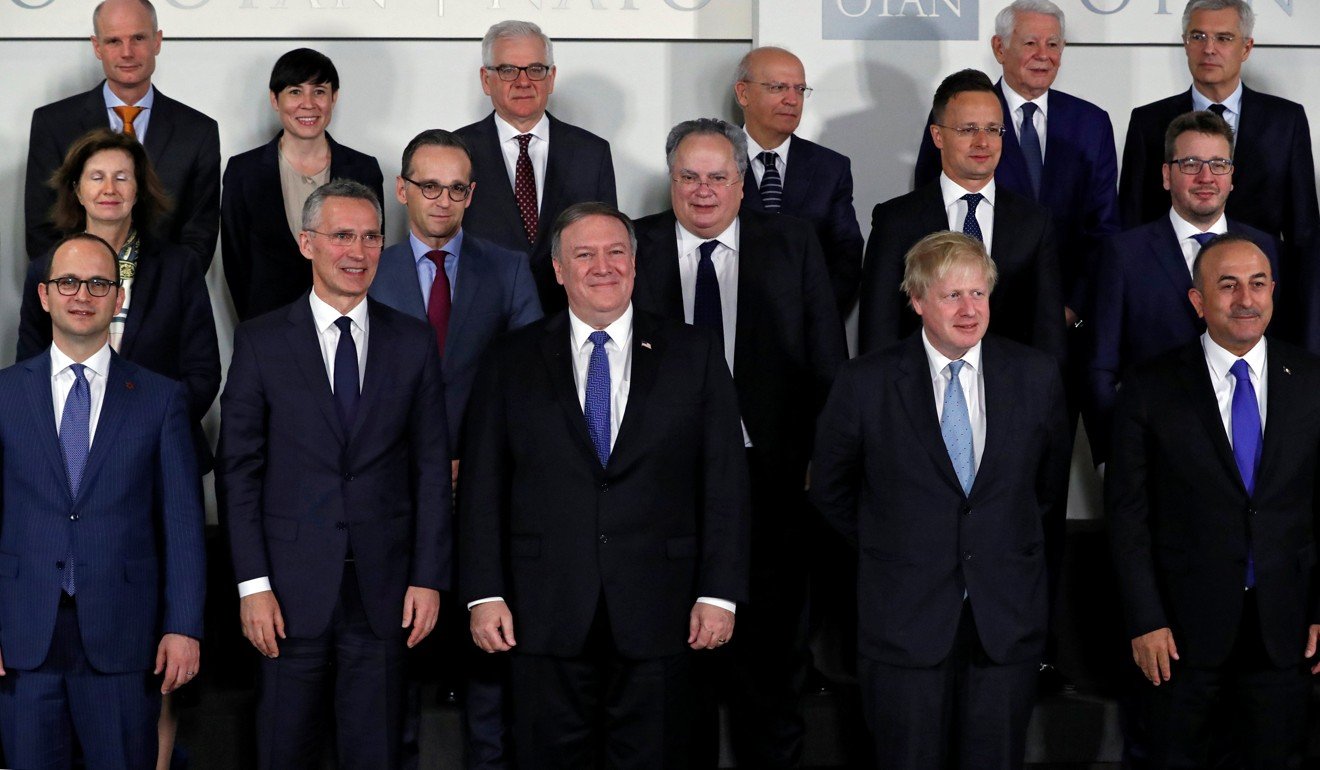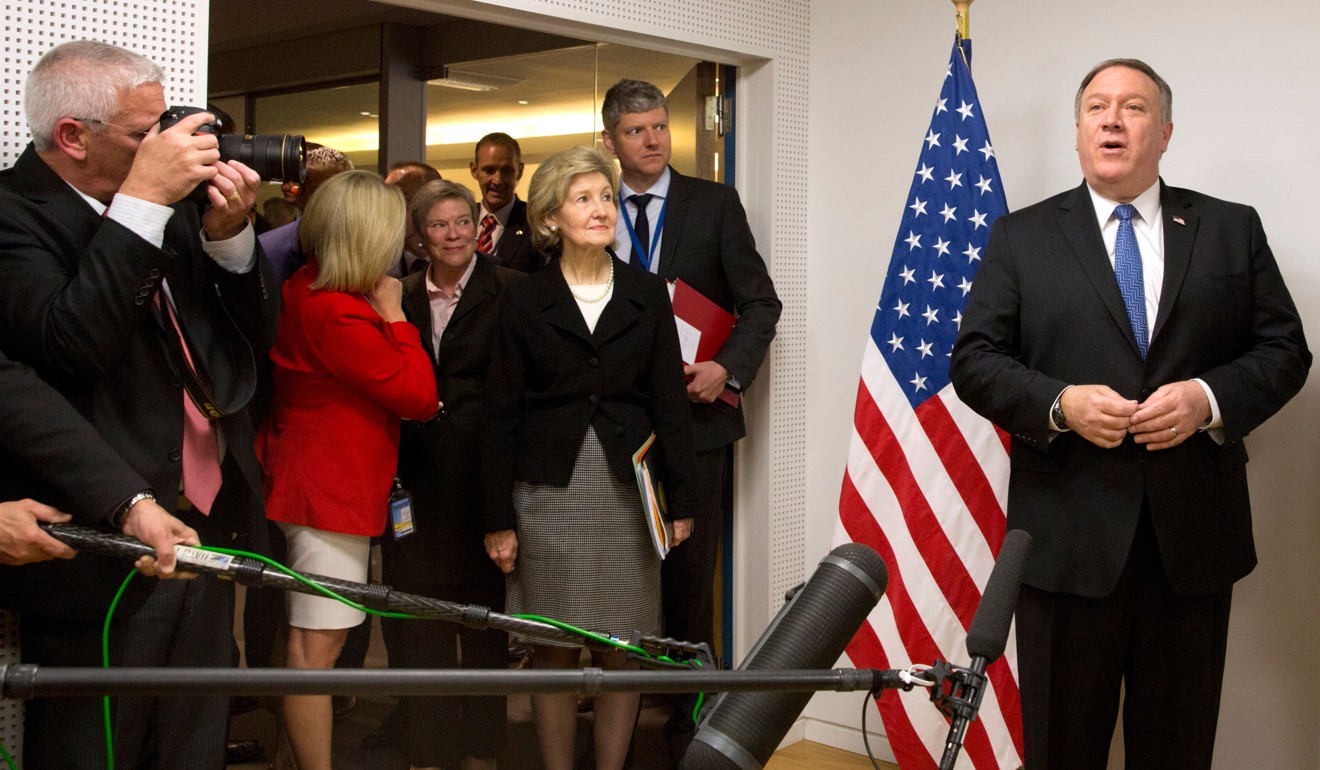
New US envoy Pompeo takes Trump spending message to Nato
Members agree on one thing – that they think Russia is a threat – but not all agree on how much money they should spend on defence
President Donald Trump’s brand new Secretary of State Mike Pompeo visited Nato on Friday to hammer home one of his boss’s oldest themes – demanding that other members pay their way – as the allies sought a common front against Russia.
There was broad agreement in Brussels on the need to find ways to counter Russia’s perceived adoption of “hybrid warfare” techniques – subversion, propaganda, cyber warfare – to undermine the West without triggering a full Nato military response.
Welcoming former CIA chief Pompeo to Nato headquarters less than 24 hours after the top US diplomat was sworn in, Secretary General Jens Stoltenberg spoke of the need to adapt the 29-member Western alliance “to a more demanding security environment”.

Pompeo’s push for increased military spending will not win unanimous support.
Some allies, most notably wealthy Germany, are reluctant to meet a commitment made at a Nato summit in Wales in September 2014 to spend at least two per cent of their GDP on defence.
Trump has repeatedly declared this to be tantamount to countries not paying their dues, and Pompeo carried this message to Brussels as his predecessor Rex Tillerson had done.
But, as he arrived, Germany’s new Foreign Minister Heiko Maas stressed the contribution Berlin was making to humanitarian work in Syria and to Iraq.
“Germany plays a very important role,” Maas said.
Friday’s talks of the 29 foreign ministers – and a defence ministers’ meeting in May – prepare the way for a summit in July that could see the US clash with Germany and others.
Before the talks began, US diplomats had singled out Germany – which spends only 1.24 per cent of its large GDP on defence – for criticism.

After the first session, the US official was more guarded. “There was a consensus by all countries to deliver their plans, including those who have not yet done so,” he said.
As the ministers meet in Brussels, German Chancellor Angela Merkel will be in Washington for a much-anticipated meeting with Trump, hot on the heels of French President Emmanuel Macron’s three-day state visit.
France and Britain took part in a recent US-led attack against Syrian President Bashar al-Assad’s alleged chemical arsenal, but Germany has not joined recent missions and Merkel’s meeting will be less warm than Macron’s.
Russia – Nato’s traditional foe – was again top of the agenda at Friday’s meeting, the last before the alliance leaves its cold war-era headquarters for new premises.
Nato ministers will look at what more they can do to counter the perceived threat from Russia, but Stoltenberg said the alliance remained open to “meaningful dialogue” with Moscow.

Some Nato members are fearful that Pompeo’s reputation for confrontation could upend the alliance’s dual-track policy on Russia, which combines military deterrence with diplomacy.
Stoltenberg is expected to say a few words to mark the end of the final meeting of ministers in the historic North Atlantic Council room where Article 5 – the alliance’s mutual self-defence pact – was invoked for the first and only time, after the September 11 attacks in the US.
Ministers will also debate plans to expand Nato’s training mission in Iraq. Details will be confirmed at the summit in July, but Stoltenberg said it would involve several hundred staff.
After his time in Brussels, Pompeo will head to the Middle East, with stops in Israel, Jordan and Saudi Arabia – countries chosen to reflect what his spokeswoman called “importance as key allies and partners in the region”.

.png?itok=arIb17P0)